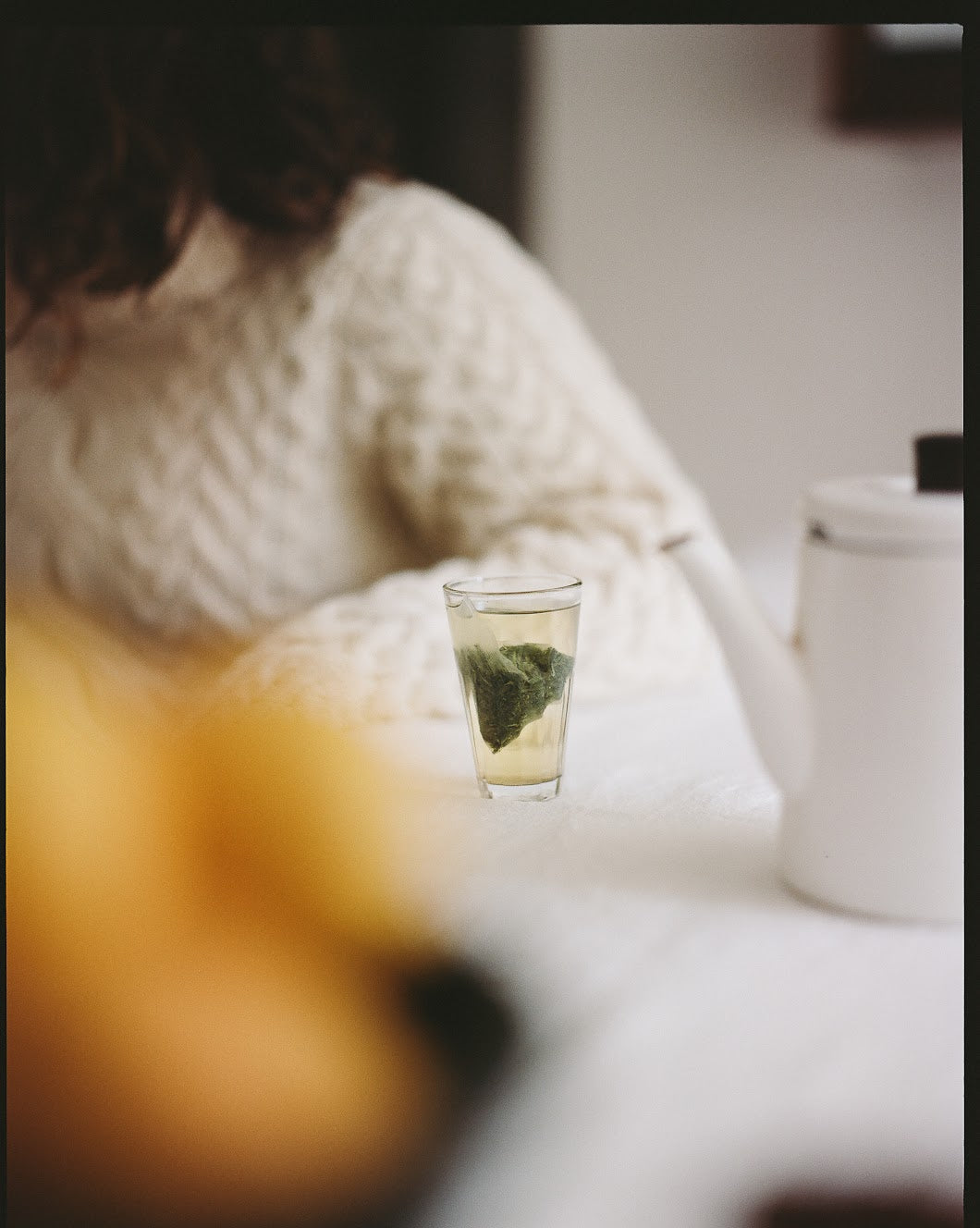The 8 Ball: Catherine Jue of Tekuno

Japanese tea connoisseurs rejoice! Founded in 2019 by Catherine Jue, Tekuno is a San Francisco based tea company sourcing unique and rare Japanese teas. Tekuno is devoted to the art of Japanese tea including the special objects inspired by traditional tea ceremony. Tekuno believes that tea is a medium to a bigger message of slowing down and taking time to connect, with others and with yourself. Today we share some special tidbits with Catherine in between sips of tea.
What is your relationship to tea?
For me, tea is a sensory experience: hearing the water boil, sprinkling tea leaves into my ceramic teapot, watching the steam bloom while the tea steeps, and finally, the smell and taste of my brew. I start every morning with tea, so each of these steps are the first things I encounter. It's a very presencing experience that I look forward to everyday.
Possible to give us a brief (or not) overview of Japanese tea culture including traditional tea ceremony?
Tea culture is as much a philosophy as it is a practice or a beverage.
Brought to Japan from China by the Buddhist monk Eisai in the 13th century, one cannot separate tea—and specifically matcha— from the Japanese tea ceremony known as chadō, sadō, or chanoyu. In chadō, matcha is mixed simply with water and consumed in 3-4 sips. Without the use of other ingredients or sweeteners to dilute the flavor, preparing ceremonial matcha requires high grade powder, which will be rich in earthiness and umami and have little bitterness or astringency.
Any tea ceremony requires both a host and their guests. The host—the preparer of the tea—invites guests to their tea room to socialize and enjoy one another’s company, often in celebration of the seasons, holidays, or seasonal gatherings specific to chadō.
There are many norms for the host to prepare for a tea gathering, including preparing specific meals to be eaten alongside matcha, making sweets, and adorning the tea room with decor appropriate to the season and the guests.
Tea ceremony is rooted in meditation and Zen Buddhism. As such, chadō is as much a way of living as it is a formal practice with rules and structure. This is reflected in the steps of a tea ceremony, the decor of a tea room, and the attitudes of (experienced) tea ceremony participants. At the core of this concept is the sense of harmony with others, living in communion with nature, and spreading peace through a single bowl of tea.
Please tell us about your sourcing- how did you come to discover such masterful tea producers in Japan?
Before Tekuno, I worked at a very genuine tea shop in San Francisco called Song Tea. There, they work with independent and small-scale producers from China and Taiwan, and I was able to learn about this practice directly from the owner.
I got the chance to join the owner of Song Tea on part of his sourcing trip one year, and it was there that I realized the importance of speaking producers' native language. It's important to developing a relationship beyond the transaction. I had learned Japanese for 6 years throughout grade school and college, so it was a natural extension of my experiences to begin sourcing Japanese teas.


Let’s talk about tea taste. What should we be experiencing when we sip on Tekuno’s Genmaicha Matcha, Hojicha, and Sencha?
All tea comes from the tea plant known as “Camellia Sinensis.” After a season of growth, leaves are harvested, steamed, rolled, and dried. This process creates a tea’s signature flavor profile. Though the skills of a producer play an important role, a tea’s environment, cultivar, and terroir are of utmost importance when crafting green teas.
As you taste teas, I always recommend allowing your senses to lead —
Aroma How do the leaves smell when they’re dry? What changes in the fragrance upon brewing?
Flavor What comes through upon a first sip? A soft floral bouquet? A rich robustness? After a few sips, what flavors linger on the palette?
Palette & Texture Give it an aesthetic assessment – what does the color remind you of? And is it milky, frothy, watery, something else?
As a general rule of quality, a classically “well-made” Japanese tea holds a balanced ratio of sweetness, bitterness, and umami. Here are a few terms to consider in describing Japanese teas:
Fresh • Freshly cut grass, fields of flowers, wheat, hay
Sweet • Rock candy, tropical fruit, forest air
Woodsy • Moss, forest floor, fibrous mushroom
Vegetal • Raw and stewed green vegetables
Oceanic • Seaweed, brine, ocean
Umami • Bone broth, roasted tomato
Making a cup of tea at home is part of a ritual of slowing down and taking a moment for yourself. Do you have any special objects (maybe a preferred ceramic, tea towel, teapot, etc.) that you always enjoy using in your tea making?
To the chagrin of my partner, I have too many special objects, enough to fill an entire bookcase wall in our living room! They're a variety of handmade teaware and tea ceremony objects I've collected over the years or been gifted by artists Tekuno has collaborated with. Tea — and one's teaware collection — is personal. My favorite part of my morning ritual is selecting the teapot and cup that "fits" the mood of the day (sometimes a minuscule pot that holds just a few drops of water feels right; other days I'm in need of a big pot of tea...).

What is your favorite Tekuno tea to enjoy?
Like most beverage people will probably answer, it depends. It depends on the mood, how I'm feeling, what the weather is like outside. However, I always return to Sencha, Satsuki for comfort.
Do you have a favorite tea and food pairing? For example, are you drinking your tea with breakfast or maybe with an afternoon snack?
One of my favorite Japanese tea pairings is Genmaicha, Matcha paired with dinner: the green umami notes have structure that can stand up to meat and seafood. If you're feeling adventurous, try it with Korean spicy octopus!
Lastly, where does the name Tekuno come from?
Tekuno is the phonetic pronunciation of the word for "techno," the alternative electronic music. It's also a play on words — the first two letters "te" is the most common spelling around the world for "tea" (the other common spelling being "cha"). With Tekuno, our goal references both words: we aim to represent our tea producers respectfully, honoring their craftsmanship, while also introducing tea in unique, alternative, and interesting ways that challenge the way people think of tea and the way it tastes.
Discover Tekuno at Covet + Lou.



